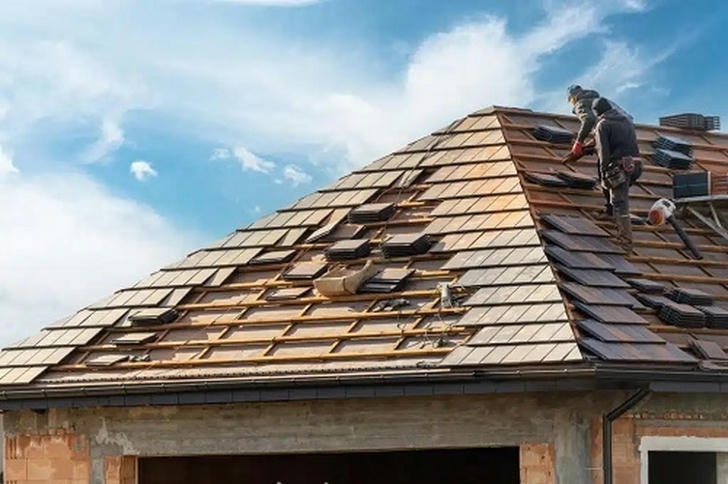Government Roof Replacement Grants: How to Apply!
Does your roof need repairs but you've been putting it off? Are you worried about the huge cost of replacing your roof?
Today, a roof is a necessary but expensive investment for homeowners. Whether your roof has been damaged by years of wear and tear or severe weather conditions, finding the funds for a new roof can be a daunting task.
Fortunately, the government offers various roof replacement service grants to help homeowners ease the financial burden of replacing their roofs. Today, this article provides you with the facts you need to know! Four questions will be explored:
Ⅰ.The average cost of replacing a roof
Ⅱ.Different government grants
Ⅲ.Eligibility
Ⅳ.How to apply for these grants
Get ready to replace your roof!
Average Cost to Replace a Roof

Before diving into government grants and financing options, it’s important to understand the typical cost of replacing a roof. The cost of replacing a roof can vary greatly based on a number of factors, including the size of the roof, the type of material you choose, the complexity of the project, and your geographic location.
The average cost of replacing a roof in the United States ranges from $5,000 to $12,000 or more. For a standard 1,500 square foot roof with asphalt shingles, the cost may be on the lower end of this range. However, if you choose a premium roofing material like metal, slate, or tile, the cost can increase significantly. Additionally, factors like the slope of the roof, the need for structural repairs, and the removal of old roofing materials can all add to the overall expense.
Government Grants
It’s important to get multiple quotes from reputable roofing contractors in your area to determine the exact cost of a specific project. Once you have a clear estimate, you can explore government grants and other financial assistance options to help cover the costs.
If you're looking for a government program to help you pay for your roof replacement, here are some roof replacement grants worth a look:
Winterization Assistance Program (WAP): The U.S. Department of Energy administers the Winterization Assistance Program, which is designed to improve the energy efficiency of low-income homes. While the program's primary focus is on winterization measures like insulation and sealing, it may also cover roof replacements if energy efficiency improvements are needed. Eligibility is based on income level, so low-income households may qualify for assistance.
USDA Rural Repair and Reconstruction Grants: The U.S. Department of Agriculture (USDA) offers the Rural Repair and Reconstruction Grant Program to help rural homeowners make necessary home repairs, including roof replacements. To qualify for a grant, you must live in a rural area and have a modest income. These grants are often used to help seniors who need home repairs, but may also be available to low-income homeowners.
HUD Community Development Block Grant (CDBG): Administered by the Department of Housing and Urban Development (HUD), the Community Development Block Grant provides funding to local governments and community organizations for a variety of community development projects, including home repairs. Some communities use a portion of CDBG funds for home repairs, including roof replacements. Eligibility criteria may vary by location, so check with your local government or housing authority for details.
State and Local Housing Programs: Many states and local municipalities offer their own housing assistance programs that may provide grants or low-interest loans for roof replacements. These programs are often targeted at low-income individuals and families, seniors, and disabled homeowners. Search for housing assistance programs specific to your state or region to explore available options.
Roof Replacement Eligibility
Qualification requirements for grants to replace roofs for free are very strict. Many government agencies prioritize limited repairs over full repairs and apply strict means-testing requirements.
Low Income
The government gives priority to low-income households when awarding grants to organizations that support roof repair and replacement. Pay attention to the details when applying for free services to avoid unnecessary rejections.
The government's means test takes into account both income and household size!
• Report your household's Modified Adjusted Gross Income (MAGI), not the total income of everyone in the household.
• Report every qualifying household member, including yourself, your spouse, and your tax dependents, to increase your chances of qualifying. Don't leave out any viable dependents.
Seniors
The government can replace roofs for seniors for free through specific programs, and nonprofit charities have expanded this opportunity as well.
• Seniors living on fixed pensions often meet the government's low-income criteria.
Nonprofits can participate in government programs that help seniors with home repairs, such as fixing leaky gutters and tiles, or rotting, sagging subfloors and rafters, because no one wants to see a senior climbing a ladder.
• Financial hardships and loneliness associated with aging have prompted charities to lend a hand.
However, opportunities for assistance extend beyond roofs. Seniors living in run-down buildings often need help with home repairs and renovations, and resources for these projects are more plentiful.
• Section 504
USDA Section 504 grants of up to $10,000 can easily support free roof replacement and repairs for seniors, provided the project addresses health and safety hazards. For example, leaks that cause black mold are a health hazard and may qualify.
People with Disabilities
For many of the government programs listed above, free roof replacement for people with disabilities is dependent on low-income criteria.
Some free home repair options for people with disabilities may not apply. For example, medical deductions for accessibility improvements (widening entryways, lowering cabinets, installing grab bars, etc.) are not available. However, many charities provide resources for the community.
•Rebuilding Together
•Habitat for Humanity
•Home Repair Alliance
Veterans
Former military personnel should seek grants outside of the Veterans Administration (VA) to replace or repair their roof. Other government agencies and nonprofits are more likely to be able to help.
How to Apply for Government Grants in 8 Steps

Applying for government grants to replace your roof can be a time-consuming process, but the potential financial relief is worth the effort. Here are the general steps:
1.Research Eligibility Requirements: Determine which government grants or programs you qualify for based on your income, location, and specific circumstances. Review the eligibility criteria and document requirements for each program.
2.Gather Necessary Documents: Gather all required documents, such as proof of income, proof of title, and the estimated cost of replacing your roof. Be prepared to provide detailed information about your family and home's situation.
3.Contact the relevant agency: Contact the government agency or organization that administers the grant you are interested in. This may include your local housing authority, the USDA, or your state's housing department. Ask about application deadlines and any upcoming grant opportunities.
4.Fill out the application: Fill out the grant application accurately and completely. Be sure to include all required documentation and clearly state why you need to replace your roof. Carefully follow the instructions provided by the grant agency.
5.Submit your application: Submit your completed application by the specified deadline. Keep copies of all documents for your records, and consider sending your application by certified mail to ensure receipt.
6.Wait for approval: The application review process may take some time, so please be patient. The agency will evaluate your eligibility and the urgency of replacing your roof. If approved, you will receive a grant award notice and further instructions.
7.Comply with funding requirements: Once you receive a grant, you must comply with the program's guidelines and requirements. This may include using an approved contractor, obtaining necessary permits, and completing your roof replacement within the required time frame.
8.Monitor Progress: Maintain communication with the granting agency throughout the project to provide updates and ensure compliance with grant terms.
Replacing your roof is a significant investment, but with the help of government grants and other financing options, homeowners can manage the financial burden more effectively. Start by researching available grants, understanding the eligibility criteria, and carefully following the application process. If a grant doesn't fully cover your expenses, consider other financing options, such as a home equity loan, personal loan, or specialized roof financing programs. By exploring these options, you can ensure the safety and longevity of your home's roof without breaking the bank.
